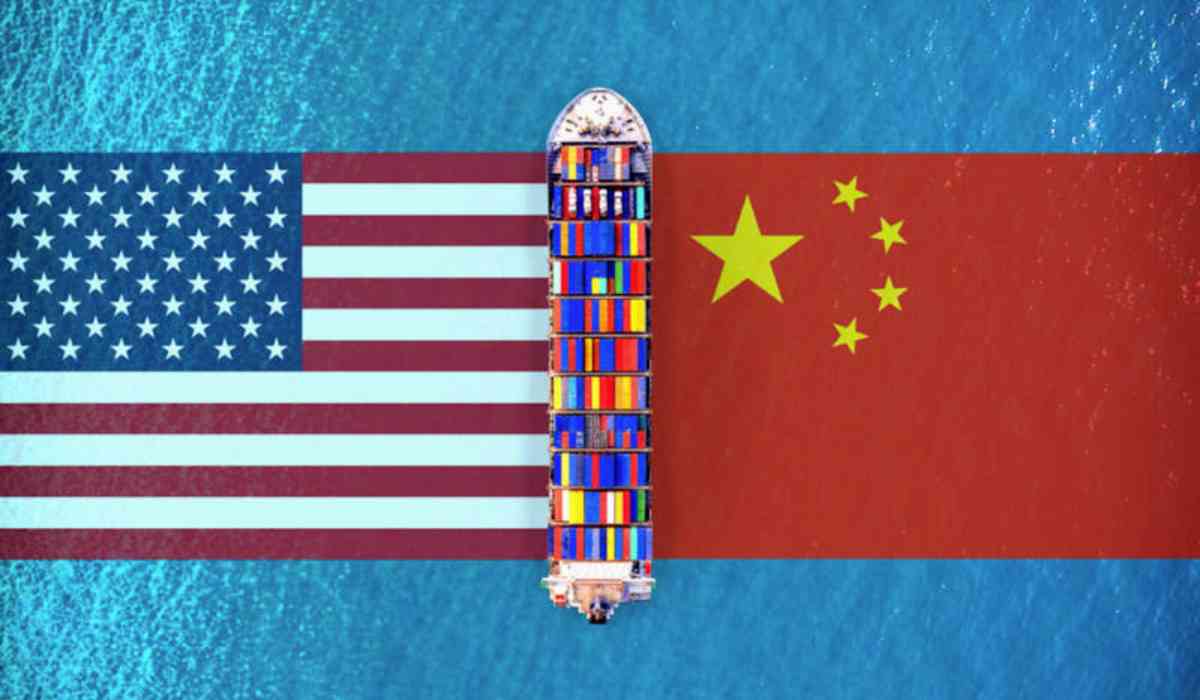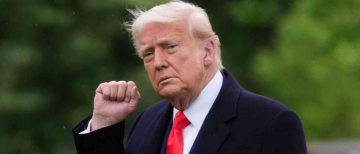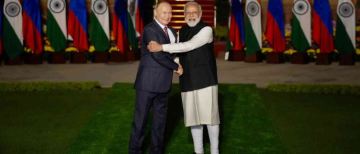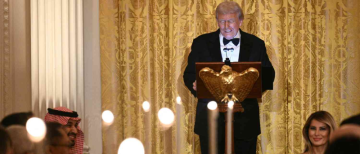In a sweeping move that has rattled global markets and reshaped international economic dynamics, U.S. President Donald Trump has imposed unprecedented tariffs on nearly 60 trading partners under the guise of “reciprocal trade justice.” At the heart of this aggressive policy lies a staggering 104% import tariff on Chinese goods and a 26% levy on Indian exports, aimed at correcting what Trump calls “unfair trade practices.”
The measures, part of Trump’s wider second-term economic strategy, mark a turning point in U.S. trade policy and could catalyze a far-reaching realignment of global trade alliances, supply chains, and geopolitical priorities.
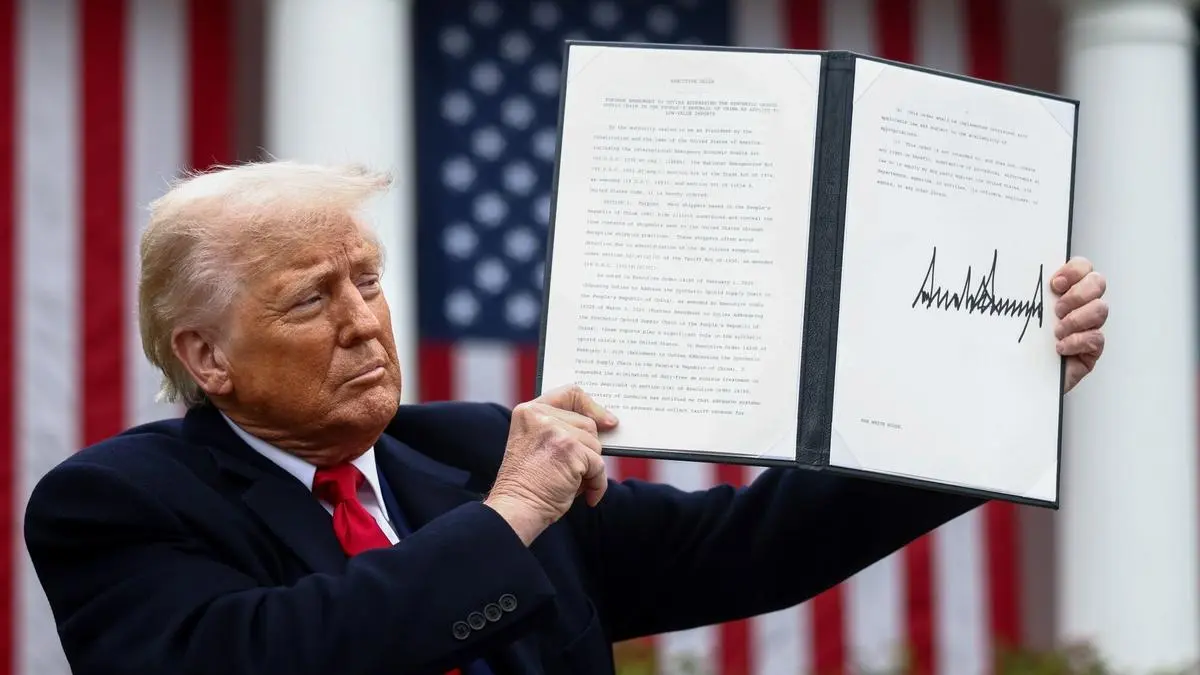
Trump’s New Trade Doctrine: Reciprocity as Retaliation
On April 5, Trump launched the first wave of his tariff blitz, applying a 10% blanket import tax on nearly all foreign goods under a national security order. Just days later, on April 9, a more targeted and severe second tier kicked in:
-
China: 104% total tariff, the harshest of all
-
India: 26% tariff
-
Other US trade partners (EU, Japan, Vietnam, etc.): Custom tariffs ranging from 11% to 50%
These measures aim to rebalance what Trump calls “decades of unfair trade” and are part of his campaign to “Make American Wealthy Again.” But the global reaction suggests the outcome may be far more complex.
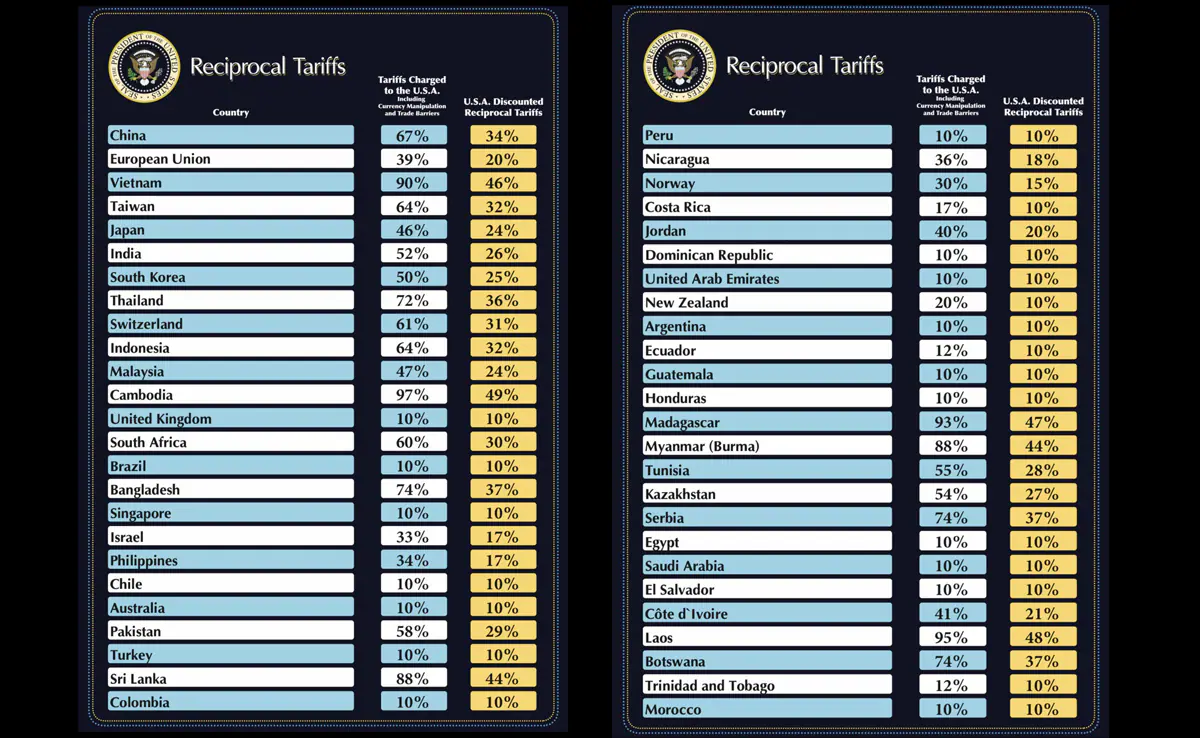
China Hit Hard: Economic Blow and Political Retaliation
Beijing’s Vow to Fight Till the End
In direct response, China issued a sharp and unified rebuttal:
-
The Commerce Ministry declared China had “abundant means” and “firm will” to fight a trade war.
-
Foreign Ministry spokesperson Lin Jian stated, “China's sovereignty, security, and development interests are inviolable,” warning of “firm and forceful measures”.
-
A white paper released by Xinhua reiterated Beijing's desire for “equal dialogue” but made clear that China would not yield to pressure.
Economic Forecast: Growth on the Line
-
Goldman Sachs projected a 2.4 percentage point hit to China’s GDP due to the 104% tariff, pushing expected growth down to 4.5%, below Beijing’s 5% target.
-
The crackdown on low-value e-commerce imports—tripling tariffs on packages under $800—further chokes platforms like Temu and Shein.
-
Chinese tech, electronics, and manufacturing exports face severe headwinds amid a broader US-China decoupling.
India’s Strategic Pivot: Negotiation Over Retaliation
New Delhi's Tactical Restraint
Rather than retaliate, India is seizing the moment to strategically reposition:
-
External Affairs Minister S. Jaishankar confirmed India is pushing for an early bilateral trade agreement with the US.
-
Commerce Minister Piyush Goyal reassured Indian industries, stating that India is “keeping its interests at the forefront” and views the pact as central to its Viksit Bharat 2047 vision.
Economic Exposure and Industry Response
India, with a $37 billion trade surplus with the US in 2024, is affected but not critically harmed:
-
The 26% US tariff targets auto components, aluminium, and steel.
-
However, pharmaceuticals, copper, semiconductors, and energy goods were excluded—helping shield key sectors.
-
Pharma stocks initially dropped up to 6% after Trump hinted at targeting the sector, but the exemption provided a late cushion.
Economic Impact: Minimal in the Short Term
-
The PHD Chamber of Commerce projected just a 0.1% short-term dip in GDP due to strong domestic production and PLI schemes.
-
ASSOCHAM and trade experts highlighted India's “inward-looking resilience” and “negotiation-first” strategy as buffers against sustained damage.
US: Internal Blowback and Political Risk
Republican Dissent Emerges
Even within Trump’s own party, alarm bells are ringing:
-
Farmers, manufacturers, and red-state industries are facing backlash, especially in Kentucky, where bourbon producers and corn suppliers are hit hard.
-
At a Senate Finance Committee hearing, GOP Senator Thom Tillis bluntly asked, “Whose throat do I get to choke if this proves to be wrong?”
-
Republican lawmakers warned that inflationary pressures, supply chain shocks, and market volatility could push the US economy toward recession.
Market Jitters and Economic Fallout
-
The S&P 500 is teetering on bear territory amid global sell-offs.
-
Japan’s Nikkei 225 dropped 4.86% the morning tariffs took effect; the yen surged 1.1%.
-
Indian indices followed suit: the Sensex fell 403 points, and the Nifty 50 lost 146 points on tariff announcement day.
Global Power Realignment: The US-China-India Triangle
Decoupling from China, Courting India
Trump’s tariff assault accelerates the US-China economic decoupling, and in that vacuum, India is emerging as Washington’s preferred alternative:
-
India’s electronics and semiconductor industries are stepping into supply chain roles formerly dominated by China.
-
According to the India Cellular and Electronics Association (ICEA), India has already outpaced Vietnam, Thailand, and China in the US electronics market due to “relentless negotiation efforts.”
-
The textile sector may benefit too, as US buyers seek alternatives to Chinese and Bangladeshi suppliers. India exported $10 billion in textiles to the US last year.
India’s Advantage in Agriculture and Trade Diplomacy
-
Despite higher tariffs, Indian seafood and rice exports are expected to hold firm, thanks to tariff advantages over competitors.
-
India’s offer to reduce tariffs on over 50% of $23 billion worth of US imports signals a proactive diplomatic effort to secure long-term trade gains.
A New Global Trade Order?
Trump’s tariffs are not just an economic tool—they are a geopolitical gambit aimed at resetting global power equations. By weaponizing trade, the US is pressuring allies and rivals alike to choose sides in a rapidly evolving world order.
-
China faces deceleration and diplomatic isolation unless it finds new trade allies or yields to talks.
-
India stands at a strategic inflection point, balancing cooperation with the US while preserving its autonomy.
-
The US must navigate domestic economic pains and political pushback to maintain its assertive trade posture.
In this new era of reciprocal tariffs and realignment, the global trading system is undergoing a seismic shift—with China’s losses potentially becoming India’s gains, and Trump’s gamble shaping the architecture of 21st-century geopolitics.
With inputs from agencies
Image Source: Multiple agencies
© Copyright 2025. All Rights Reserved Powered by Vygr Media.

